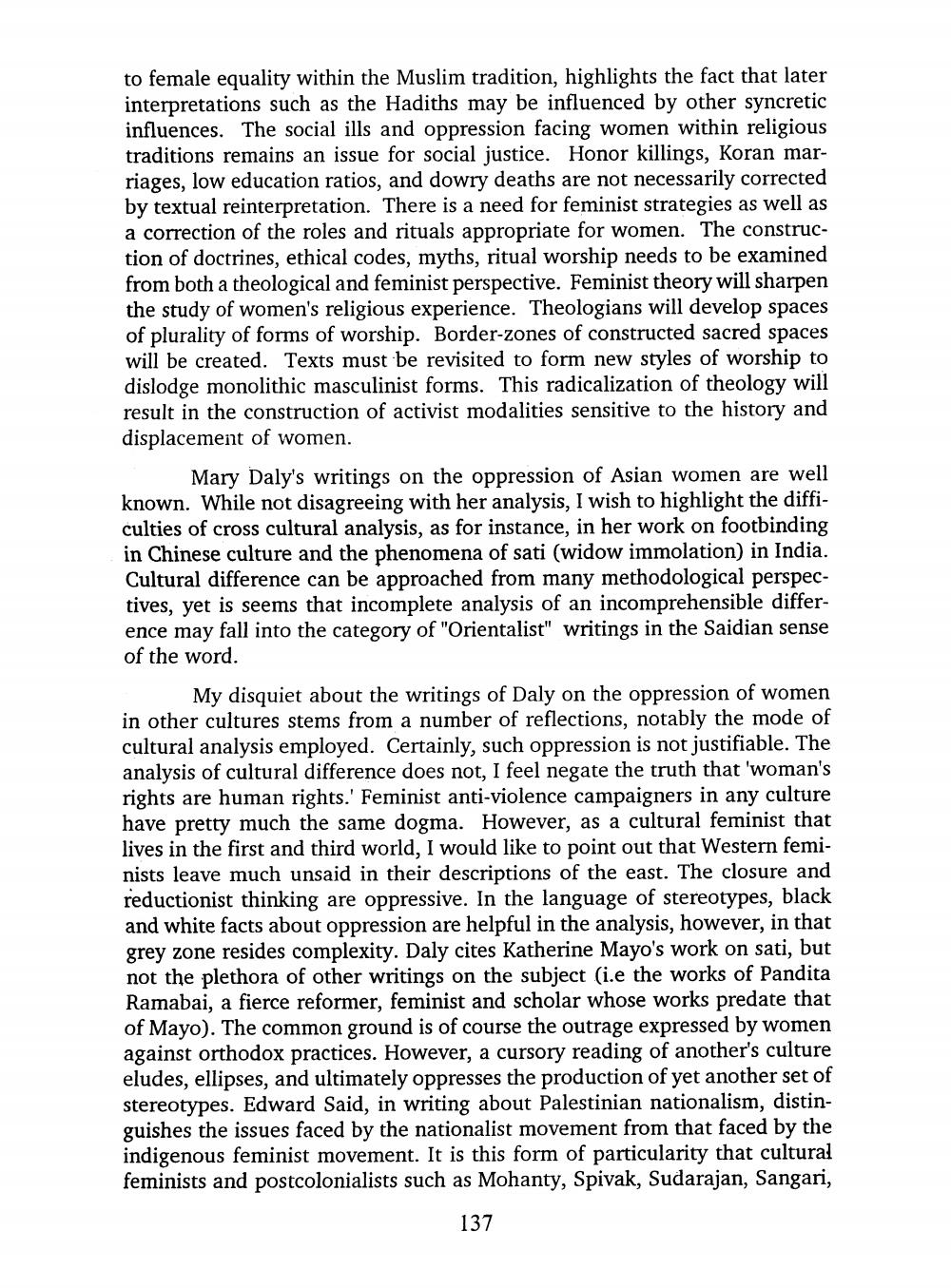________________
to female equality within the Muslim tradition, highlights the fact that later interpretations such as the Hadiths may be influenced by other syncretic influences. The social ills and oppression facing women within religious traditions remains an issue for social justice. Honor killings, Koran marriages, low education ratios, and dowry deaths are not necessarily corrected by textual reinterpretation. There is a need for feminist strategies as well as a correction of the roles and rituals appropriate for women. The construction of doctrines, ethical codes, myths, ritual worship needs to be examined from both a theological and feminist perspective. Feminist theory will sharpen the study of women's religious experience. Theologians will develop spaces of plurality of forms of worship. Border-zones of constructed sacred spaces will be created. Texts must be revisited to form new styles of worship to dislodge monolithic masculinist forms. This radicalization of theology will result in the construction of activist modalities sensitive to the history and displacement of women.
Mary Daly's writings on the oppression of Asian women are well known. While not disagreeing with her analysis, I wish to highlight the difficulties of cross cultural analysis, as for instance, in her work on footbinding in Chinese culture and the phenomena of sati (widow immolation) in India. Cultural difference can be approached from many methodological perspectives, yet is seems that incomplete analysis of an incomprehensible difference may fall into the category of "Orientalist" writings in the Saidian sense of the word.
My disquiet about the writings of Daly on the oppression of women in other cultures stems from a number of reflections, notably the mode of cultural analysis employed. Certainly, such oppression is not justifiable. The analysis of cultural difference does not, I feel negate the truth that 'woman's rights are human rights.' Feminist anti-violence campaigners in any culture have pretty much the same dogma. However, as a cultural feminist that lives in the first and third world, I would like to point out that Western feminists leave much unsaid in their descriptions of the east. The closure and reductionist thinking are oppressive. In the language of stereotypes, black and white facts about oppression are helpful in the analysis, however, in that grey zone resides complexity. Daly cites Katherine Mayo's work on sati, but not the plethora of other writings on the subject (i.e the works of Pandita Ramabai, a fierce reformer, feminist and scholar whose works predate that of Mayo). The common ground is of course the outrage expressed by women against orthodox practices. However, a cursory reading of another's culture eludes, ellipses, and ultimately oppresses the production of yet another set of stereotypes. Edward Said, in writing about Palestinian nationalism, distinguishes the issues faced by the nationalist movement from that faced by the indigenous feminist movement. It is this form of particularity that cultural feminists and postcolonialists such as Mohanty, Spivak, Sudarajan, Sangari,
137




